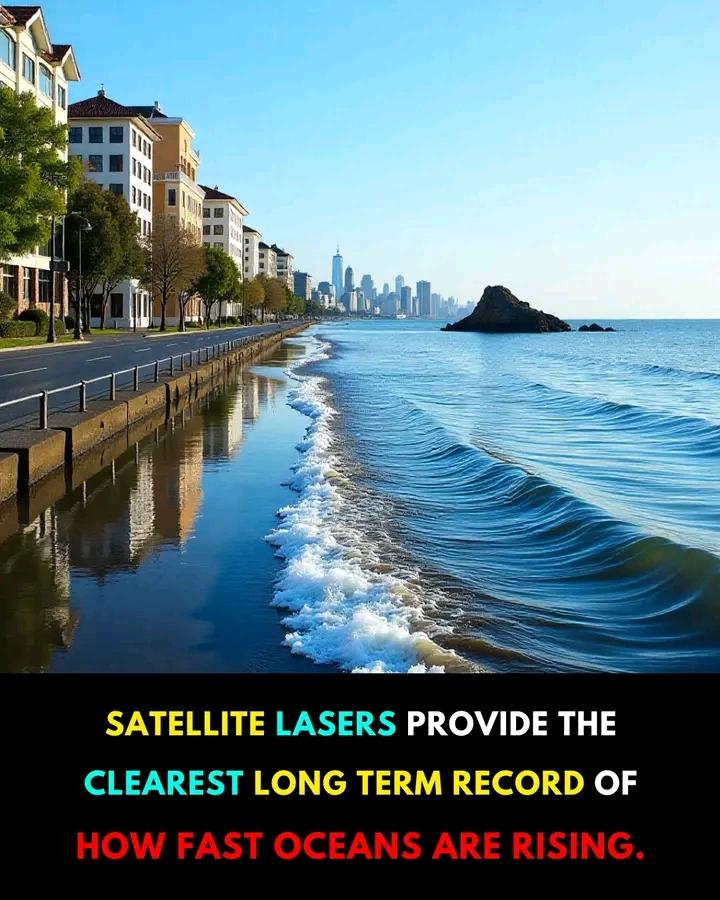Over the past 30 years, scientists have observed a remarkable 90-millimeter rise in global sea levels—driven largely by melting ice. Using an advanced satellite laser-ranging technique, researchers have produced the first direct three-decade record of global ocean mass change, revealing that land ice loss has become the primary contributor to rising seas. Since 1993, sea levels have risen at an average rate of about 3.3 millimeters per year, with the pace accelerating in recent years.
While warming oceans expand and contribute to higher sea levels, the dominant factor today is the surge of water from melting glaciers and ice sheets. The study shows that since 2005, ocean mass increase from melting land ice—especially from Greenland—has surpassed thermal expansion, accounting for more than 80 percent of total sea level rise.
The refined method measures minuscule changes in Earth’s gravity by firing lasers at satellites and tracking how ocean mass shifts over time. Combined with advanced modeling, this breakthrough overcomes previous limitations, offering an exceptionally precise way to monitor global sea-level change. These findings not only strengthen the link between melting land ice and sea level rise but also provide crucial data for testing and improving climate models that forecast future ocean heights.
While warming oceans expand and contribute to higher sea levels, the dominant factor today is the surge of water from melting glaciers and ice sheets. The study shows that since 2005, ocean mass increase from melting land ice—especially from Greenland—has surpassed thermal expansion, accounting for more than 80 percent of total sea level rise.
The refined method measures minuscule changes in Earth’s gravity by firing lasers at satellites and tracking how ocean mass shifts over time. Combined with advanced modeling, this breakthrough overcomes previous limitations, offering an exceptionally precise way to monitor global sea-level change. These findings not only strengthen the link between melting land ice and sea level rise but also provide crucial data for testing and improving climate models that forecast future ocean heights.
Over the past 30 years, scientists have observed a remarkable 90-millimeter rise in global sea levels—driven largely by melting ice. Using an advanced satellite laser-ranging technique, researchers have produced the first direct three-decade record of global ocean mass change, revealing that land ice loss has become the primary contributor to rising seas. Since 1993, sea levels have risen at an average rate of about 3.3 millimeters per year, with the pace accelerating in recent years.
While warming oceans expand and contribute to higher sea levels, the dominant factor today is the surge of water from melting glaciers and ice sheets. The study shows that since 2005, ocean mass increase from melting land ice—especially from Greenland—has surpassed thermal expansion, accounting for more than 80 percent of total sea level rise.
The refined method measures minuscule changes in Earth’s gravity by firing lasers at satellites and tracking how ocean mass shifts over time. Combined with advanced modeling, this breakthrough overcomes previous limitations, offering an exceptionally precise way to monitor global sea-level change. These findings not only strengthen the link between melting land ice and sea level rise but also provide crucial data for testing and improving climate models that forecast future ocean heights.
0 Comentários
·0 Compartilhamentos
·24 Visualizações
·0 Anterior




